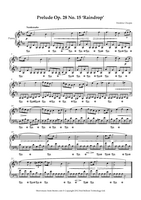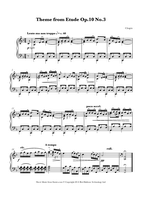5 Popular Easy Arrangements of Chopin Piano Pieces
by Christian Morris
Chopin's music for piano contains some of the most charming and melancholy melodies even written, but it is also famous for being some of the most challenging for pianists to play.
We're alert to that fact, and so, alongside many original Chopin piano scores, we have also created arrangements that are not as difficult as the original, but still include those famous tunes. Here are some of the best we have on 8notes. If you need more, visit our Chopin page.
The videos shown below feature professional pianists playing the original pieces as Chopin wrote them, so you can get a sense of how they sound in all their original glory.
1. Frederic Chopin : Funeral March
Perhaps the most famous of all of Chopin's piano music. It was played at his own funeral at Paris s Père Lachaise Cemetery; has been used at the funerals of politicians such as John F Kennedy and Winston Churchill; and appeared many times in popular culture.The tempo should remain steady throughout - don't rush! The left hand should hardly move, the fingers maintaining close contact to the keys and providing an even accompaniment. The right hand will need to be played with a little more weight than the left to bring out the melody. The dynamic changes are especially important. Don't be afraid to play quite loudly when required, but remember that the key to good dynamics is contrast - fortes will not need to be so big if you can also control the piano sections.
2. Frederic Chopin : Nocturne Op9, No2
Chopin popularised, even though he did not invent the nocturne, this being his most well-known example. It is also famous for its use in popular culture, recently appearing, for example, in episode 10 of Westworld.Again the left hand should maintain close key contact - especially it should roughly follow the fingering laid out in the first bar. Though not marked, you may also considering using the sustain pedal for each bar. The right hand should be as expressive as possible. This may be achieved by closely following the dynamic markings and perhaps by adding some of your own, for example a crescendo towards the high A in bar 7 followed by a diminuendo.




